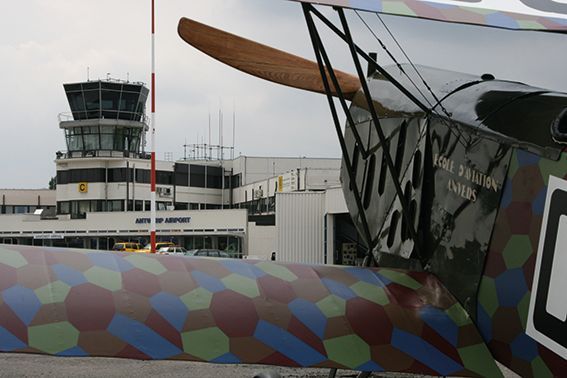
Fokker D.VII
One of the most successful fighter aircraft of the First World War is the result of the talent of the young Anthony Fokker.
It would play a major role during the last year of the war in 1918.
Eight hundred machines were delivered to the front, assigned to forty-eight Jagdstaffeln. They were built in the Fokker factories of Schwerin, the Ostdeutsche Albatross Werke in Schneidemühl and the Albatross Werke in Johannisthal.
The Fokker D.VII is the only German aircraft type mentioned in the armistice terms.
Under those conditions, Germany had to deliver one thousand seven hundred aircraft to the Allies, three hundred and twenty-four of which to Belgium. The first were delivered unassembled to Evere airfield from February-March 1919.
Of all the types delivered, it was the Fokker D.VII that had a long career.
Of the seventy-five delivered, thirty-five would fly between 1919 and 1931 in various fighter squadrons. Nine aircraft were sold to civilians, the rest were used as spare parts.
The first aircraft on the Belgian civil aircraft register was a Fokker D.VII, O-BEBE, which was registered on March 1, 1920.
Stampe and Vertongen also bought two of these warplanes for their flying school in Antwerp. The O-BABY was purchased and registered on August 22, 1920 and flew until July 23, 1923. The O-BOBE was registered on April 30, 1923 and remained in service until February 19, 1926.
Our Fokker D.VII was built in 1985 by Rousseau Aviation in France for use in the movie 'The Blue Max'. It received the French civilian registration F-BNDG. After the film was completed, the aircraft went to Ireland where it was registered as EI-APT.
In Ireland it was damaged in a landing incident rendering it unflyable. It then left for America and was given a place in the Ryder's Replica Fighter museum in Alabama, registered as N903AC.
When it came to Europe in 2000, it was still in non-fly worthy condition. As a result, it was decided to give the aircraft a full restoration and to repaint it in a Belgian colour scheme.
That restoration is now almost complete and hopefully it will take to the skies again in the near future.
Our Fokker is not equipped with an original engine, but with an English Gipsy Queen engine that delivers 205 hp.
Stampe en Vertongen Museum vzw
Antwerp International Airport
Bus 3
B-2100 Antwerp-Deurne
Belgium
O.N. BE0447.236.613
RPR Antwerp
email: stampe@skynet.be
www.stampe.be
Opening hours individual visits
- Mon - Fri
- Closed
- Sat - Sun
- -
Closed on Easter Sunday and during August, December and January
Useful links
All rights reserved | Stampe en Vertongen Museum vzw






